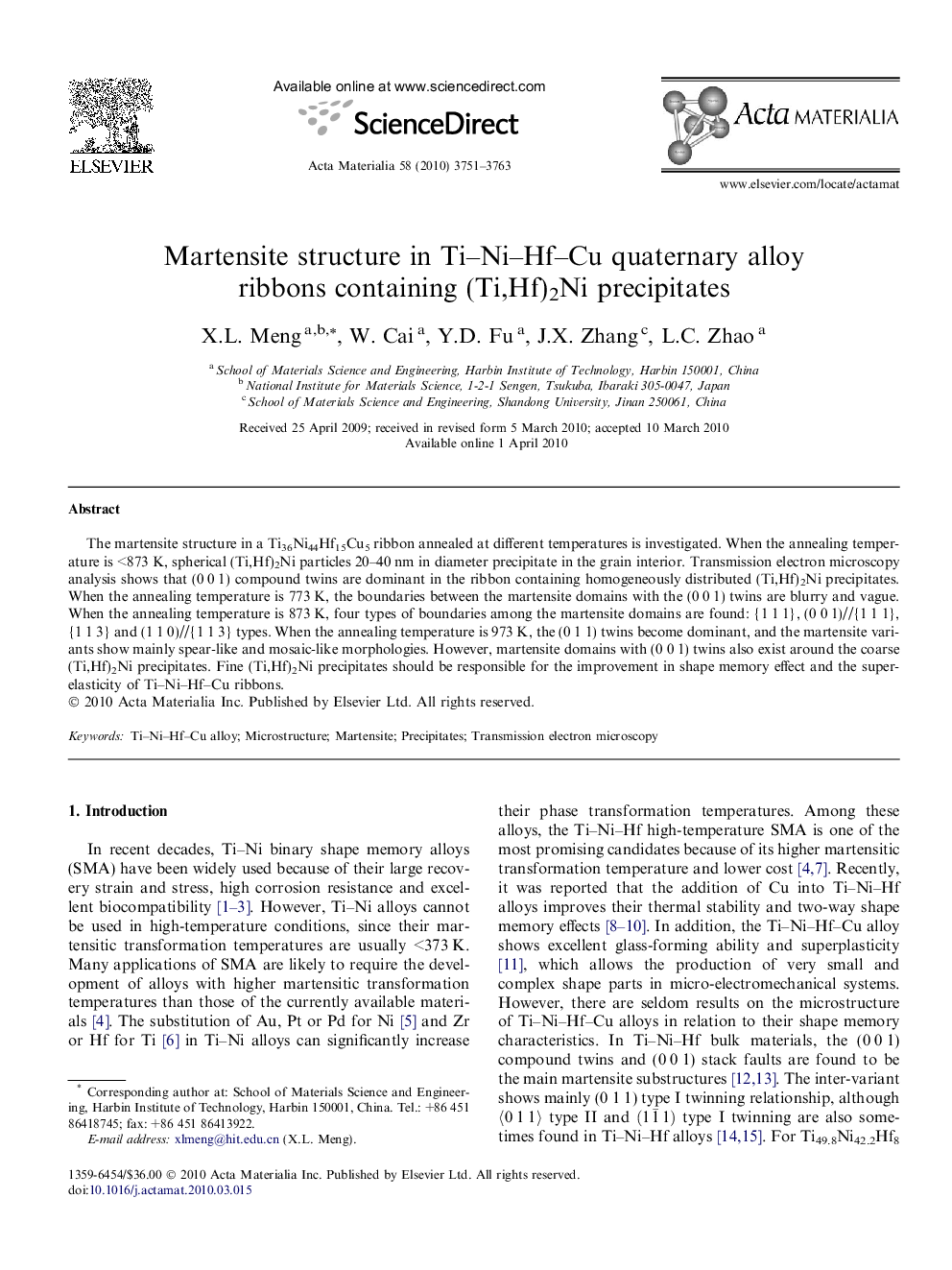| Article ID | Journal | Published Year | Pages | File Type |
|---|---|---|---|---|
| 1448757 | Acta Materialia | 2010 | 13 Pages |
The martensite structure in a Ti36Ni44Hf15Cu5 ribbon annealed at different temperatures is investigated. When the annealing temperature is <873 K, spherical (Ti,Hf)2Ni particles 20–40 nm in diameter precipitate in the grain interior. Transmission electron microscopy analysis shows that (0 0 1) compound twins are dominant in the ribbon containing homogeneously distributed (Ti,Hf)2Ni precipitates. When the annealing temperature is 773 K, the boundaries between the martensite domains with the (0 0 1) twins are blurry and vague. When the annealing temperature is 873 K, four types of boundaries among the martensite domains are found: {1 1 1}, (0 0 1)//{1 1 1}, {1 1 3} and (1 1 0)//{1 1 3} types. When the annealing temperature is 973 K, the (0 1 1) twins become dominant, and the martensite variants show mainly spear-like and mosaic-like morphologies. However, martensite domains with (0 0 1) twins also exist around the coarse (Ti,Hf)2Ni precipitates. Fine (Ti,Hf)2Ni precipitates should be responsible for the improvement in shape memory effect and the superelasticity of Ti–Ni–Hf–Cu ribbons.
